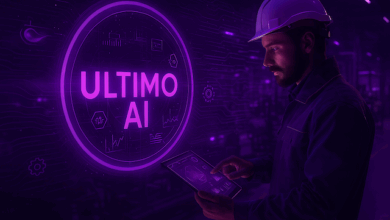Artificial intelligence has evolved rapidly from rule-based automation to machine learning-driven insights to its next frontier – Agentic AI. This marks a shift from AI systems that assist security analysts and network administrators with their tasks to AI capabilities with enhanced (but still controlled) autonomy able to accelerate decision-making, streamline operations, and augment human capabilities using AI agents.
Agentic AI is reshaping industries, from supply chain management and customer service to healthcare and financial services. While still keeping humans in control, it optimizes workflows, provides real-time insights, and reduces administrative burdens. Networking and security industries also benefit, where AI accelerates processes while maintaining human oversight.
Agentic AI in Networking and Security
Agentic AI is not limited to co-pilot or chat-based experiences. AI used to be all about interactive AI assistants, but embedded Agentic AI can operate as a vital component of networking and security infrastructures. It works in the background to continuously optimize network performance, detect threats, and provide policy recommendations for enforcement. By seamlessly integrating AI-driven capabilities into security and networking systems, organizations can enhance security posture and networking performance while maintaining human oversight.
Better than humans alone, Agentic AI can assess objectives, refine strategies, and execute workflows faster and with greater precision. There are many Agentic AI use cases already emerging in the market today, including:
Accelerated threat detection and response – Agentic AI continuously monitors network activity, detects anomalies, and recommends mitigation measures in real-time. For example, if an AI agent identifies an unusual spike in outbound traffic that could be data exfiltration, it can immediately flag the issue, suggest an isolation protocol, and provide security teams with context for faster decision-making. As a result, this reduces the amount of time to containment from hours to minutes.
Intelligent network optimization – IT and networking teams can leverage AI-driven co-pilots that analyze network conditions in real time and proactively recommend optimizations. For example, an organization using AI-driven SD-WAN can benefit from AI-assisted routing that recommends optimal paths based on current traffic loads to ensure high availability for latency-sensitive applications like video conferencing, even during unexpected outages or peak traffic hours.
Adaptive Zero Trust enforcement – Agentic AI dynamically adjusts authentication and access permissions to strengthens Zero Trust frameworks. If an AI agent detects anomalous behavior, such as a user accessing critical resources from an unfamiliar location, it can immediately recommend additional verification steps, notify IT teams, or temporarily limit access while awaiting human review.
Automated policy management with human oversight – It proves challenging to manage security policies across distributed environments. AI agents improve security teams by suggesting policy updates, reducing misconfigurations, and ensuring compliance. For example, organizations can deploy AI-driven policy orchestration that continuously analyzes security postures and flags inconsistencies for human validation before implementation.
AI co-pilots for security and networking – AI co-pilots’ ability to deliver real-time recommendations, automate mundane tasks, and improve response times is incredibly helpful to IT networking and security teams. For networking, AI co-pilots help IT teams optimize network configurations, troubleshoot connectivity issues, and predict capacity requirements. For security, AI co-pilots assist analysts by summarizing threats, suggesting remediation steps, and accelerating incident resolution.
AI-augmented incident forensics – Agentic AI enhances time-consuming forensic analysis by identifying attack vectors, correlating logs, and generating structured insights for security teams quickly. In a breach scenario, AI can reconstruct an attack timeline within minutes, much faster than humans, highlighting key events while leaving final analysis and decision-making to IT analysts, thus reducing mean time to respond (MTTR).
The Future of AI-Accelerated Networking and Security
As this technology evolves, organizations that integrate AI-driven capabilities into their security and networking operations will be better equipped to handle the complexities of modern enterprise environments, gaining efficiency in their network management and improving protection against evolving threats.
Looking ahead, the potential for Agentic AI in networking and security continues to expand. Future use cases could include AI-driven proactive threat hunting, self-healing networks that detect and remediate issues autonomously, and intelligent compliance auditing that dynamically ensures regulatory compliance. Multi-cloud AI orchestration could optimize workload placement and security enforcement across hybrid environments. These innovations represent just the tip of the iceberg, and as AI technology matures, new possibilities will clearly emerge to further strengthen enterprise security resilience and network performance.
Find out more about Versa AI today.





